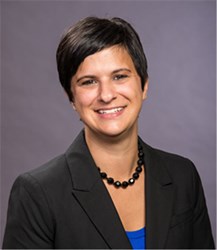Merck Uses Automation And Disposables To Drive Upstream Process Development
By Trisha Gladd, Editor, Life Science Connect

In a recent article from McKinsey & Company, experts at the consulting firm stressed the importance of overcoming existing operational and technical challenges in biopharmaceutical development, due to rapid growth of the market. It was noted in the article that biopharmaceuticals are the fastest growing area in the pharmaceutical industry, generating global revenues of $163 billion, which makes up about 20 percent of the pharma market. Credited for their efficacy with limited side effects, biopharmaceuticals offer numerous opportunities in patient care; however, development of a drug from living cells is a delicate and complicated process requiring consistent product quality and purity throughout the manufacturing process.
Automation and disposable technology have offered considerable efficiency improvements to speed cell line development; however, a major challenge with process development for biologics is how labor intensive it can become. Many different interactions and parameters can impact product quality and product titer, which typically requires iterative rounds of statistical experimentation using up to 20 reactors or more per study. For cell culture mAb processes, this development work can take three to four months to complete, which adds considerable cost for a company in multiple ways.
Automation And Disposables In Process Development
Because of this challenge, David Pollard, Ph.D., executive director of BioProcess Technology & Expression, BioProcess Development at Merck, and his dedicated technology group wanted to see how the benefits of automation and disposable technologies could be translated into tools to drive high throughput upstream process development. Through work with both internal and external collaborators, Pollard explains that “the Bioprocess Development department at Merck now has end-to-end solutions for rapid process development from cell lines screening to, upstream, purification, and formulation, all of which are enabled by high throughput analytical methods.”
 |
| David Pollard, Ph.D., Executive Director of BioProcess Technology & Expression, BioProcess Development at Merck |
To develop a solution for upstream and reduce the work involved in process development, Pollard says the team worked with TAP Biosystems, a technology company recently acquired by Sartorius Stedim Biotech, to develop an automated 24-bioreactor system called the ambr250. Merck’s proposal to TAP for the ambr250 came on the heels of TAP’s ambr15, which is a tool used for the screening of high producer clones and media development. This provided the line of sight for the ambr250 upstream development tool. “The vision for the ambr250 was a high throughput automated system, using disposable bioreactors, controlled by one scientist implementing a single DOE (design of experiment) in one run,” says Pollard. “That's how we came up with the ambr250—based upon that idea of being able to run a single statistical design of experiments with five or six parameters in that 20 to 24 bioreactor window.”
Because the bioreactors are all single-use disposable, it only takes a couple hours to set up the reactors with pre-sterilized tubing sets and reactors. Then the scientist can execute the experiment and the automated system does all the work. “It was deliberately designed to be flexible in order to meet all the possibilities that you would ever want, so imagine feeding on demand, or feeding based upon a particular attribute, and having that automated,” explains Pollard. “Now you have automation work going on, so your scientists are free to work on other challenges. The automated sampling system taking samples overnight and weekends, so more data can be extracted from the experiments. This provides more knowledge value from your experiments and improves the work/life balance of the scientist.”
Pollard recognizes there are concerns with automated systems and their ability to maintain sterility and robustness. In this regard, he says Merck has performed over 800 bioreactor runs during the last two years with low contamination rates of around two percent and low failure rates at three percent. Consistency is not a concern either, as he says TAP’s software design has proven to be able to handle the complicated scheduling required to independently operate 24 bioreactors.
The sensitivity of biologics during manufacturing scale-up is yet another risk in process development, which is why Pollard says it’s imperative you have a system that is a true scale down of your large scale systems. This is why the ambr250 is designed around conventional stirred tank bioreactor design. He explains it is essential the small scale disposable reactors designs are aligned with the standard stirred tank geometry used throughout the industry, rather than a novel design that is only applicable to lab scale. This will enable process development with the confidence that the scale down model mimics commercial manufacturing.
Design With The Pipeline In Mind
Using a traditional glass reactor route limits the number of experiments that can be done. With the ambr250, the design space can be widened, which provides a better understanding of a particular project, thereby leading to a more robust process. Alternatively, the ambr250 enables more projects to be completed resulting in a faster pipeline development. At Merck, this has translated to efficiency gains in the range of three to six times faster over conventional glass bioreactor approaches.
In addition, although the majority of pharma’s current pipeline are CHO mAbs, there is a portion that are considered new modalities, such as antibody drug conjugates and bispecifics, where the end user must evaluate possible deviations from the existing platform processes. Pollard recognized a single tool was needed that can handle both CHO mAbs cell culture as well as microbial expression systems. This is a tall order for a bioreactor system requiring low agitation and low air flow rates for cell culture compared to high oxygen transfer and cooling demand for microbial; however, TAP Biosystems was able to address this issue with novel design approaches so that the ambr250 can handle both cell culture and microbial expression systems.
A Look Ahead
While the ambr250 is currently in use at Merck, Pollard says they are working on continued improvements with TAP, specifically around the analysis of the samples. “If you think of a CHO process, you need to measure multiple parameters, such as cell viability, glucose, lactate, osmolarity, and dissolved gases.” he explains. “Chris Kistler (Associate Principal Scientist) and others at Merck are working with TAP to integrate analyzers so all the offline sampling we would do is integrated into the system.” He says this would significantly reduce the offline sample burden and potentially allow for feedback control as well as produce more improved processes.
The high throughput process development tools enable the team at Merck to consider transitioning from existing experimental designs with only five to six parameters to larger, more integrated next-generation approaches. Pollard explains, “For example, Merck is collaborating with Synthace who has created methods and tools to execute statistical design of experiments for up to 30 - 40 parameters. This approach is enabled by the high throughput tools, such as the ambr250. We are currently evaluating rapid experimental approaches that integrate strain construction with upstream process development, which have traditionally been separately optimized. Overall, this approach considers a wider parameter range (> 30) using a smaller set of experiments. It will improve process development efficiencies and lead to more, and potentially better, producing reliable processes.”
In October 2014, Merck and TAP’s efforts with the ambr250 to accelerate drug development, mitigate risk, and pave a new approach to biopharmaceutical process development earned them the Best Collaboration and Upstream: Best Technology Applications awards at the BioProcess International Conference and Exhibition in Boston. During acceptance of the award for Best Technology Application, which recognizes a user or supplier of an application that offers “much more than hype,” Mwai Ngibuini, product manager at TAP Biosystems, highlighted the benefit of this application to not just the industry but also the patient. “The main need that is being fulfilled here is being able to bring drugs quickly to the market, and in that way being customer driven and patient driven. That is the single biggest benefit this technology brings to the industry.”
